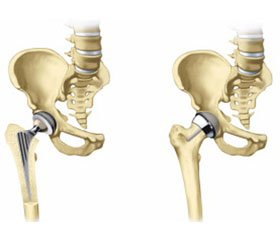The article was published on p. 71-72
Current evidence suggests that BMD score is crucial but not the only criterion to determine fracture risk. Osteoporosis and fractures risk factors studies collected a large evidence base to define the contribution of each different factor in osteoporotic fractures. According to the literature data, some parameters of the femur (length of axis, length of femoral neck) are independent predictors of hip fractures, but such studies among Ukrainian patients are absent. Although FRAX is an important instrument for measuring the hip fracture risk, right now there are few studies in Ukrainian patients using FRAX-model. From NOF guidelines FRAX scores 3 or more for hip fractures is the important criteria for treatment initiation.
The purpose of this research was to study FRAX indices and some geometric parameters of the upper third of the hip and in patients with intra- and extra-articular fractures of the femur.
Material and methods. 94 patients aged 50–89 years (median age 70.98 ± 0.99 years) were examined, 74 of whom (37 women and 37 men) were hospitalized with intra- and extra-articular hip fractures. We calculated 10-years risk for hip osteoporotic fractures using FRAX algorithm for Austrian model without BMD determination (before and after hip fracture). Assessment of geometry parameters of the femur was performed on the contralateral limb in relation to fracture.
Results. In patients aged 60–69 and 70–79 years the indices of FRAX-hip before fracture were significantly higher than the limits which are used in NOF guidelines for treatment initiation. In patients with hip fractures indices of FRAX-hip were 7.7 and 12.4 before and after hip fractures accordingly an all group (1.4 and 3.4 in age group 60–69 years, 6.5 and 11.2 in age group 70–79 years and 17.0 and 24.5 in age group 80–89).
Although the significant effect of age on femoral geometry parameters in men and women with intra- and extra-articular fractures was established, but this effect was not present in patients without fractures.
In men with intra-articular hip fractures the indices of the length of hip axis, length of femoral neck, intertrochanteric distance, basis of the head and head diameter were significant lower in comparison with indices of patients without fractures. In men with extra-articular hip fractures the indices of length of hip axis, intertrochante-ric distance, basis of the head and head diameter were also significant lower in comparison with indices of patients without fractures. We did not find the significant diffe-rences of hip geometry parameters in women depending on the hip fractures.
Conclusion. Femoral geometry and FRAX indices are independent risk factors for hip fractures in Ukrainian patients. Identified differences should be considered for both planning surgery after hip fracture and for predicting the risk of hip fracture in older age patients.

